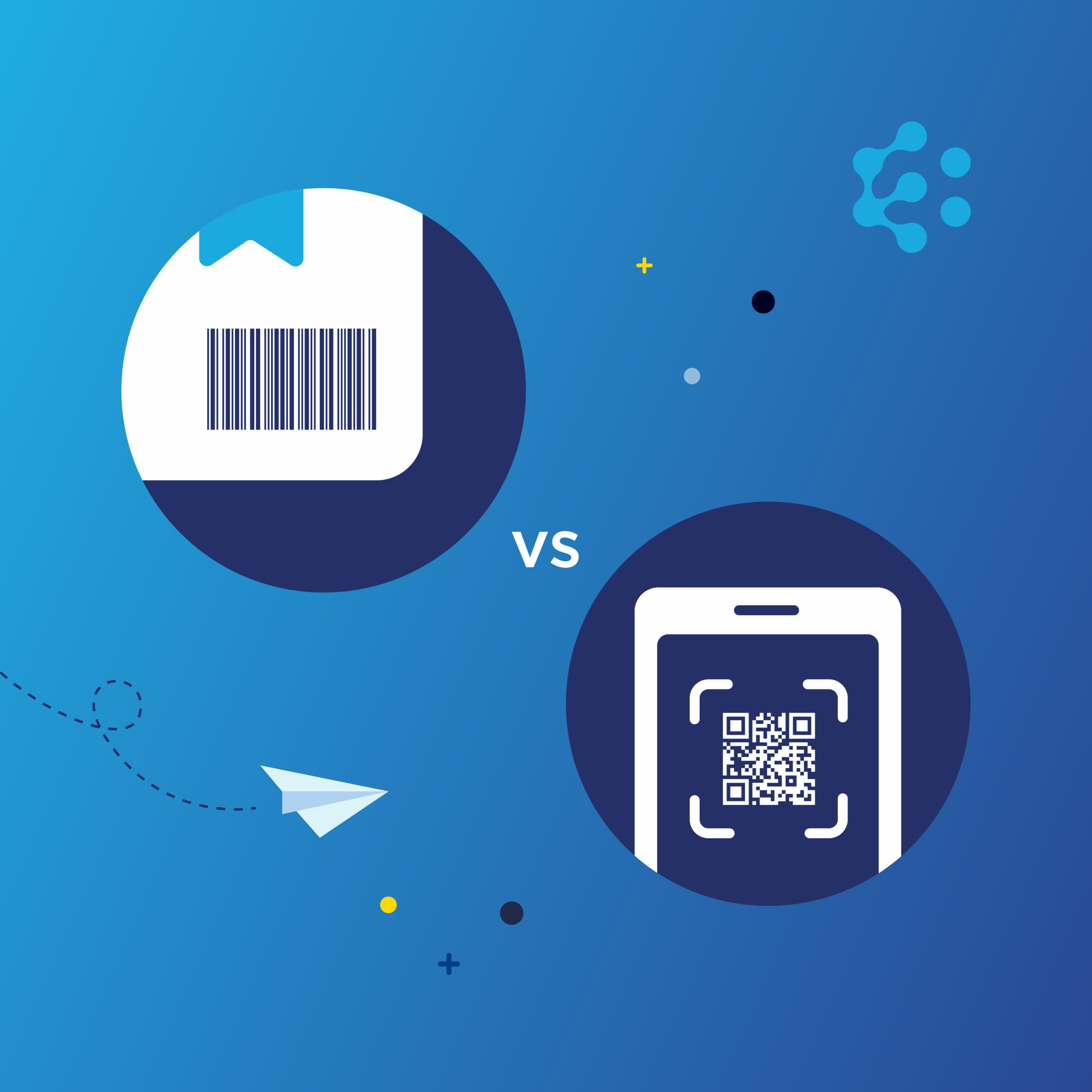
Barcodes vs QR Codes – What’s Better for Inventory Management?
When keeping track of your stock levels, it’s important that you have thorough process to complete this. Barcodes and quick response (QR) codes are effective ways of managing inventory; both are types of labels which can display information when scanned by a device, whether it be a scanner of sorts or just a typical smartphone.
While barcodes are nothing new, QR codes have seen a mighty surge in usage. In fact, over 86% of smartphone users in the UK and Europe have scanned a QR code at least once in their live. Additionally, over a third (36.4%) scanned at least one weekly. But when it comes to choosing a method for your inventory management, how do you choose?
Barcodes
Most commonly found on products at your local supermarket, barcodes are labels that consist of parallel lines. Each barcode is differentiated by different thickness of the black lines and the space between each line. These codes can be scanned to reveal important product information such as location of manufacture, production batch, when it will expire, etc.
How do barcodes work?
When a barcode is scanned, the scanner picks the information up from the black and white lines or, as it sees it: 1s and 0s. The black parts of the barcode represent the 0s (or ‘offs’) and the white parts represent 1s (‘ons’). Twelve numbers can be found below the barcode, which provide additional information including:
- Product type
- Manufacturer code
- Barcode authentication
All the details can be displayed with both the code and number, a useful tool for keeping stock organised.
QR codes
A QR code is essentially a barcode – a machine-readable label which displays information about a product via a unique pattern. Whilst barcodes are one dimensional, QR codes can be used to direct devices to a websites or intranets with further information. One advantage to using a QR code over a barcode is the security that comes with them. In fact, they’re so secure, you can make online payments with them within seconds.
How do they work?
As the data can be scanned and translated into readable content, a QR code works almost identically to a barcode. However, what sets the two apart is the amount of information that each can hold. QR codes can hold more data, using four encoding modes: alphanumeric, numeric, binary and Kanji (a Chinese/Japanese writing system). The amount of data that can be stored on a QR code can vary, depending on the language(s) used but they have a variety of uses, including text (contact details, restaurant menus), payment links, authentication and URLs, etc.
Which is better for inventory management?
Barcodes have been the go-to for identifying stock for some time. However, with the improved accessibility and storage of information that QR codes are known for, the best option is up for debate. It’s all down to the needs of your business.
Data Stored
Including both type and amount of data that can be stored in a single code, its advantage QR codes. Barcodes have very limited capability when it comes to displaying basic product information and the amount that can be displayed. The two-dimensional QR system can show websites, texts, contact information, GPS locations. All of which are impossible to do with a barcode. Not only is it more capable, but more convenient to have QR codes.
Accessibility
Accessibility cannot be judged on one factor alone, there are multiple ways to measure how easy it is to use both. First, QR codes have more support for mobile devices, as most phones come with an integrated scanner. You can download a barcode scanner onto your phone but using it for this purpose isn’t as common. You can only scan a barcode in one position as well, whereas with a QR code, the label can be scanned horizontally or vertically.
Cost
QR codes are still relatively new, meaning that older software will not be able to process the information. Almost all devices will be able to scan a barcode and, thanks to how long they’ve been in circulation, they’re cheaper to generate.
Security
As times have moved forward, cybersecurity has become a growing issue. There are less security measures involved with barcodes; you don’t even need the internet to scan them, no personal information is stored, and all data is encrypted. However, if a QR code that contains malicious data is scanned, your device will access it as normal, putting you at risk.
Integration
At this moment in time, there is no software that can read a QR code – but could change in time. QR codes are great for scanning from mobile devices, straight into an inventory management software platform. This process is simpler than the setup for barcode scanning but if you currently use inventory management software, you may already have the means for integrations for your POS, warehouses, etc.
Conclusion
QR codes are the next step from the platform that barcodes had built. The ability to store more information and be scanned in more ways than one makes them much more capable, leaving barcodes in their dust while doing so.
But not just yet. With the lack of software to start integrating them into an inventory management system, it means barcodes will be here to stay a while little longer.
Need support upgrading your current inventory management software? Take a look at our services or get in touch to arrange a Discovery Call.